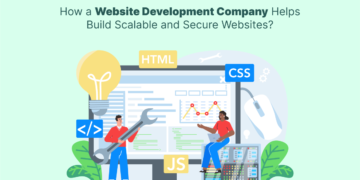When designing a meeting room, choosing the right conference table is one of the most crucial steps. It’s not just about aesthetics; it’s about function, comfort, and space optimization. The right conference table dimensions ensure your meeting area is both professional and practical. Whether you’re furnishing a small team huddle space or a grand executive boardroom, knowing the dimensions that best suit your room and team size is essential for productivity and a positive impression.
Why Conference Table Dimensions Matter in Office Planning
Many companies overlook the significance of selecting proper conference table dimensions, often opting for visual appeal over utility. However, the size of your conference table affects how many people you can accommodate, how comfortable your meetings are, and even the flow of conversation during discussions. A table that is too large for a room can create a cramped environment, while a table that’s too small may not reflect the authority and professionalism your business wants to project.
The most common conference table dimensions range from 6 feet for small team settings to over 20 feet for large boardrooms. Understanding your available floor area and seating needs helps you make the right choice and avoid costly replacements down the line.
Standard Conference Table Dimensions and Seating Capacity
Let’s break down some standard conference table dimensions based on seating capacity. These measurements serve as a reliable guide when deciding what fits your space best:
- 6-foot table (72″ x 36″): Seats 6 people comfortably
- 8-foot table (96″ x 48″): Seats 8 people comfortably
- 10-foot table (120″ x 48″): Accommodates around 10 people
- 12-foot table (144″ x 48″): Ideal for 12 participants
- 16-foot table (192″ x 48″): Fits 14-16 people
- 20-foot table (240″ x 60″): Suitable for large meetings with up to 20 attendees
Keep in mind that these are general estimates. If chairs with armrests are being used or if there’s a need for extra elbow room, fewer people might fit around the same table.
Space Planning: How Much Room Should You Leave Around the Table?
Choosing the right conference table dimensions is just part of the equation. You must also consider how much space you need around the table for movement and functionality. Experts recommend allowing at least 3 feet (36 inches) of clearance on all sides of the table. This space ensures that people can move around comfortably, chairs can be pulled out fully, and presentations or video conferences can be conducted without hindrance.
If your conference room includes other elements like a projector screen, cabinet, or whiteboard, make sure their placement doesn’t interfere with seating or walking space. In smaller rooms, oval or round conference tables might offer a more efficient use of space while maintaining a collaborative setting.
Material and Shape: Factors That Complement Dimensions
Once the table size is decided, the next step is choosing the shape and material that complements it. Different shapes can affect how space is perceived and used. For instance:
- Rectangular tables are traditional and widely used for structured meetings and boardroom settings. They make the best use of long rooms.
- Boat-shaped tables provide a modern look and enhance visibility among participants.
- Oval tables allow for better collaboration and work well in tight spaces.
- Round tables foster equal participation but are typically reserved for smaller groups due to size limitations.
Material also impacts the weight and durability of the table. Solid wood tables are sturdy and prestigious but heavy, while laminate or glass options are lighter and more budget-friendly. Selecting the right combination of shape, size, and material contributes to an efficient and elegant meeting room setup.
Technology Integration in Conference Tables
Modern conference rooms often include built-in technology features, such as cable management ports, USB charging slots, and HDMI connections. These integrations help streamline meetings and maintain a clean workspace. However, you’ll need to consider how this affects your choice of conference table dimensions.
Tables equipped with tech features often need more width to accommodate embedded wiring channels or power boxes. If your business relies heavily on virtual meetings or presentations, opting for a slightly wider table with integrated technology can enhance productivity and create a more professional environment.
Custom vs. Ready-Made Conference Tables
While standard sizes serve many businesses well, some offices may benefit from custom-designed tables, especially when dealing with unusual room layouts or very specific design themes. Custom conference tables offer flexibility in terms of size, shape, material, and finish. However, this option may be costlier and take more time for production and delivery.
On the other hand, ready-made conference tables are quicker to install and often more affordable. Many suppliers offer a wide range of sizes and finishes, making it easy to find one that suits your office space with minimal compromise.
Final Thoughts: Finding the Perfect Fit for Your Office
Selecting the right conference table dimensions doesn’t have to be a complex process, but it does require thoughtful planning. Always start by measuring your available room space and determining how many people will regularly use the table. Think about how the table’s size, shape, and features will integrate with the room’s layout, aesthetics, and technology needs.
Having a well-sized and well-designed conference table speaks volumes about your business professionalism. It supports seamless communication, creates a comfortable atmosphere, and leaves a lasting impression on clients and stakeholders.
In conclusion, for companies looking to invest in quality furniture that aligns with both design and functionality, it’s best to consult with a trusted supplier. Office Furniture Supplier Philippines offers a wide selection of conference tables tailored to different office sizes, styles, and needs—helping you create a professional space that enhances team collaboration and company image.


























